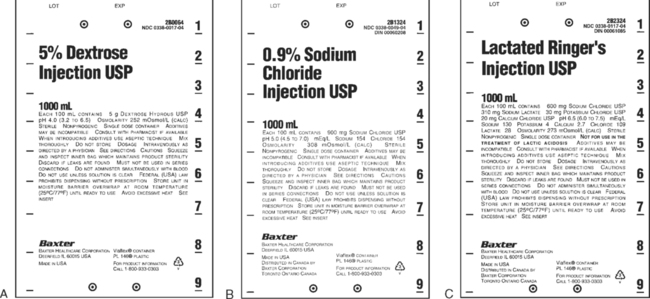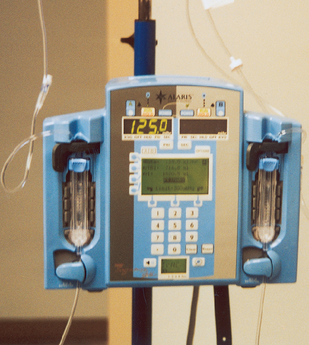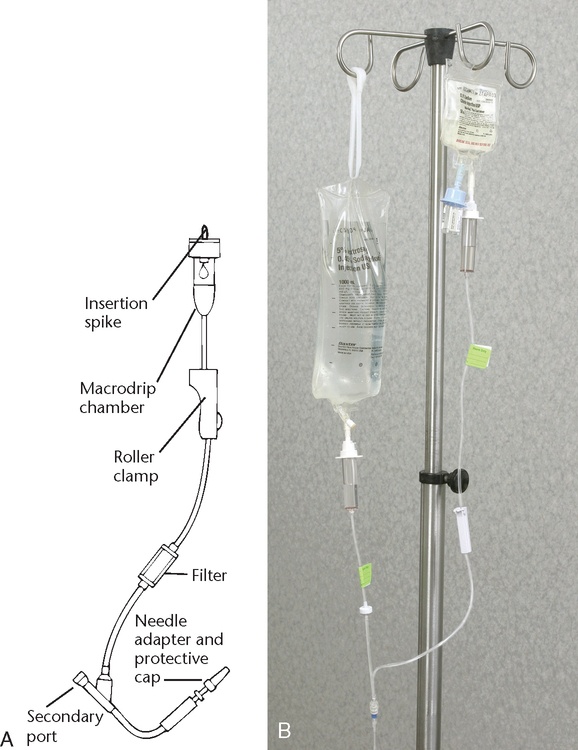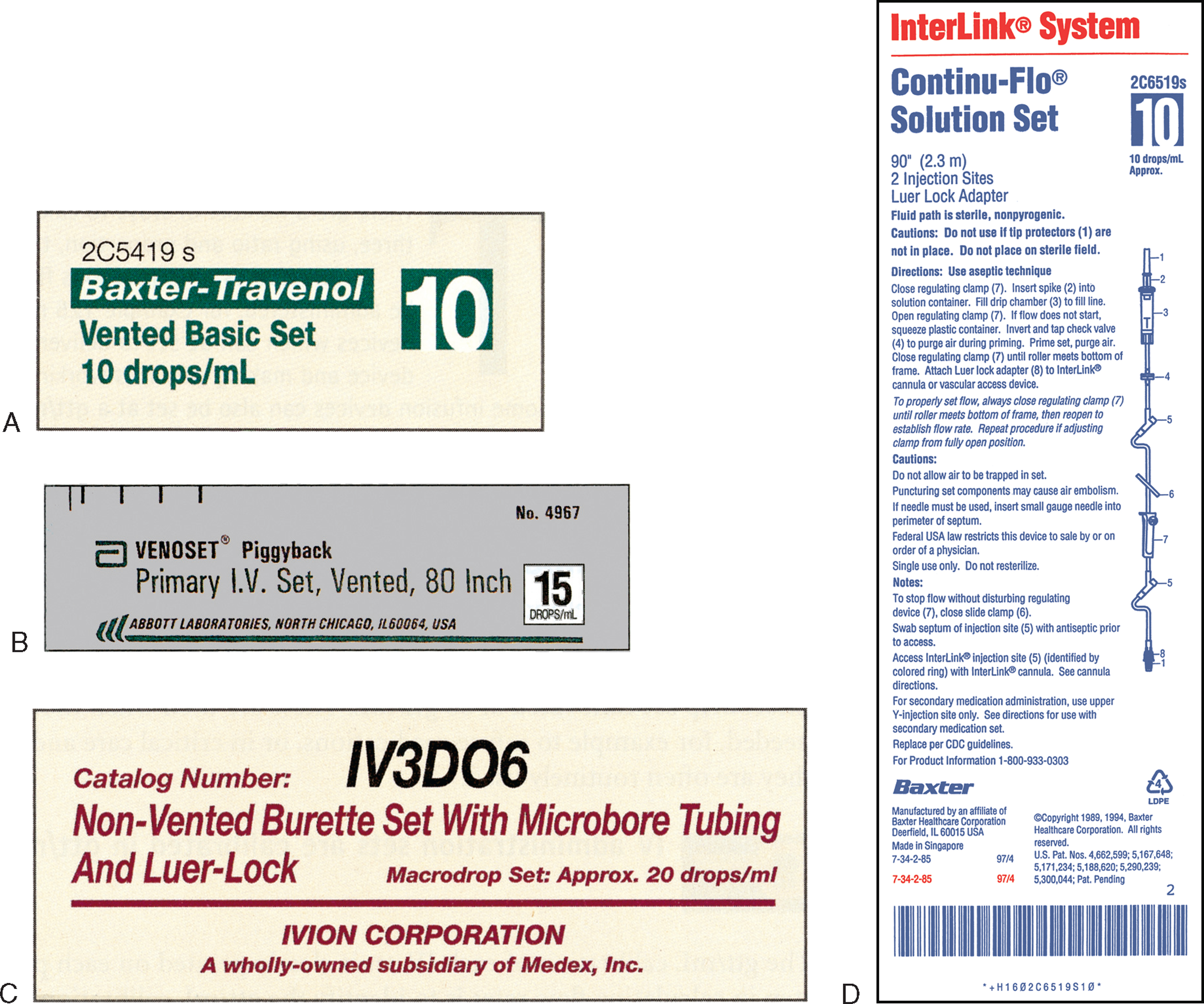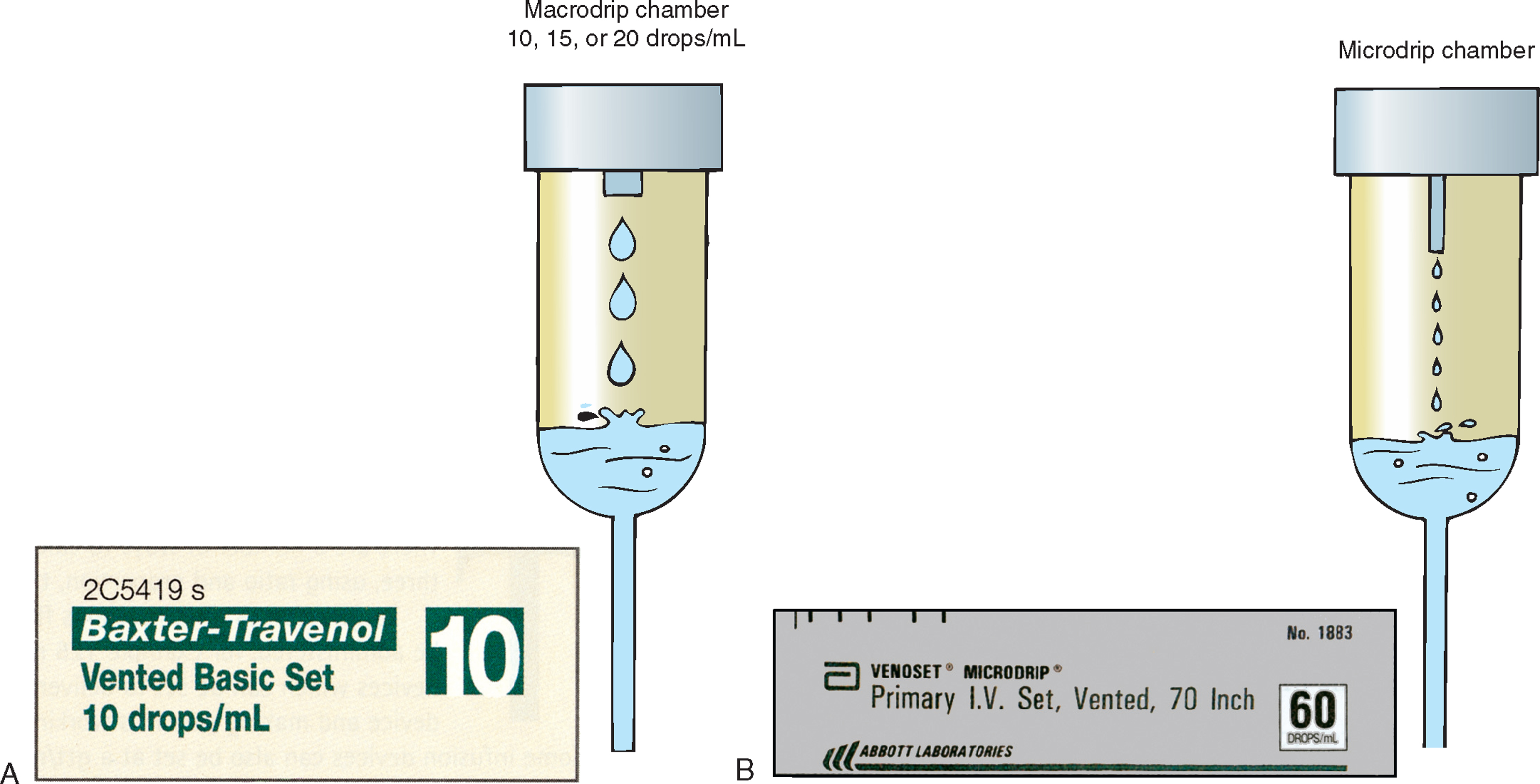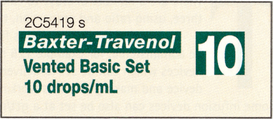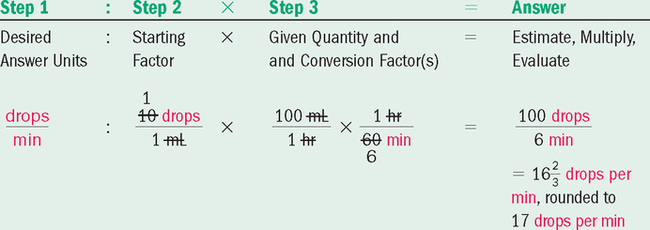• Interpret basic intravenous (IV) solution orders for peripheral infusion. • Identify contents of commonly ordered IV fluids. • Identify average flow rates for adults who are NPO and the general rationale for variations. • Estimate, calculate, and verify flow rates for intermittent and continuous IV solutions on gravity and electronic devices. • Calculate grams of dextrose and sodium chloride in IV fluids. • Estimate and calculate the duration of flow for IV solutions in hours and minutes. • Identify patient safety assessments related to IV solution therapy. 1. What are examples of the patient-related criteria that the prescriber uses to make an informed decision about the flow rate for an IV order? (Give a brief answer.) __________________________________________ 2. What are the main purposes of a primary line, a secondary line, and a port? __________________________________________ 3. What is an average range of isotonic maintenance solution flow rates that might be ordered for a maintenance IV for an adult patient who is NPO and has good heart, lung, and renal function? The essential elements of infusion equipment are • A prescribed unmedicated or medicated solution • A pole or stand to hold the solution and delivery devices • A rate controller or cassette pump(s) as needed • Infusion tubing of various sizes and types to connect the solution to the access device, needle, or needleless port • Dressings and tape to protect and secure the injection site Additives such as vitamins, minerals, potassium chloride (KCl), and many other medications may be ordered for inclusion in these solutions. Figure 9-1 shows labels of selected isotonic solutions. 1. Which type of solution most closely approximates the tonicity of plasma—hypotonic, isotonic, or hypertonic? Refer to “Osmolarity” in the Essential Vocabulary. _______________________________________ 2. How does the percentage of solute in hypotonic and hypertonic solutions differ from that in isotonic solutions? (Give a brief answer and refer to Essential Vocabulary if necessary.) 1. What are five types of equipment needed for all IV infusions? ____________________________________________ The following are two typical orders for a continuous IV infusion: • Identify the ordered flow rate in mL per hr and any special instructions. • Determine how long the IV solution will last. The calculations are usually very basic. • If the prescriber orders D5W at 125 mL per hr, the nurse administers a continuous flow rate of 125 mL per hr until the order is discontinued or changed. • If the prescriber orders 1 L D5W q8h, the flow rate is derived with a simple calculation: • Milliliters and hours are both desired in the answer. This distinguishes hours from minutes or other time frames that may be ordered. The initial entry in the equation setup is the matched units in the numerator (milliliters). Hours (hr) must be entered in a denominator. ____________________________________________ • If the order states 1 L q8h, it is obvious that the IV infusion will require replacement in 8 hours. If the order states only the mL per hour, a simple calculation is required. When electronic controllers or pumps are used for IV infusion, the nurse must enter the ordered flow rate on the digital device. The LED screen displays the number of milliliters being infused per hour, the total number of milliliters that have been infused, and various other information, depending on the sophistication of the device (Figure 9-2). There are several types of specialized IV tubing. The main types include • Primary (main) tubing for “main” and “maintenance” IV lines, EIDs, and gravity infusion devices (see Figure 9-3, B) • Secondary, shorter tubing that connects to the primary tubing at a port to permit additional intermittent solutions to be added (piggybacked) without having to create a new injection site (see Figure 9-3, B) • Blood administration sets with special filters and a Y connector for NS solution to prime the lines before and flush after blood transfusion or to use if the blood needs to be stopped or removed for any reason • Extension tubings that are used when more length is needed (e.g., for ambulation) For gravity devices, the nurse selects the calibration of tubing needed based on the equipment available, the flow rate ordered, and the contents of the IV solution. The DF is available on the tubing administration set. Figure 9-4, A illustrates a DF of 10 (10 drops per mL). Macrodrip (large-diameter) tubing, with a DF of 10, 15, or 20, is selected for unmedicated solutions, solutions requiring faster flow rates, and solutions that have less powerful medications (Figure 9-5, A). Microdrip tubing (also known as pediatric tubing) has a DF of 60 and nicon001-9780323069045w tubing that delivers tiny drops from a needle-like projection to achieve 60 drops/mL. Because of the projection, microdrip sets can be recognized at a glance without having to go to a supply room to check the DF (Figure 9-5, B). Check agency policy for administration set selection protocols. The flow rate for simple gravity devices that consist of only an IV solution and tubing is derived from the number of mL per hr ordered and is delivered in drops per minute. The drop-per-minute rate is calculated by the nurse. The nurse adjusts the flow rate with a hand-operated slide pinch or roller clamp (Figure 9-6). To convert mL per hr to drops per minute, identify the following factors: 1. Number of mL per hr ordered 2. Calibration (DF, or drops per milliliter) of the selected tubing administration set, stated on the administration set package: 10, 15, 20, or 60. Some agencies provide a flow rate control device for gravity infusions, such as the one shown in Figure 9-7. The Dial-a-Flo device is an example of an in-line apparatus that can be added to a gravity infusion set so that the number of mL per hr can be set on the dial and the number of drops per minute does not have to be calculated.
Basic Intravenous Calculations
Introduction
![]() Be aware that IV equipment changes with facility purchase agreements.
Be aware that IV equipment changes with facility purchase agreements.
![]() Patients may have some ability to monitor their therapy with oral medications because they may have knowledge and experience with them at home. However, patients are totally dependent on the nurse for safe IV administration. Hazards from improper IV administration occur more rapidly than from other, slower routes of absorption and may not be reversible.
Patients may have some ability to monitor their therapy with oral medications because they may have knowledge and experience with them at home. However, patients are totally dependent on the nurse for safe IV administration. Hazards from improper IV administration occur more rapidly than from other, slower routes of absorption and may not be reversible.
![]() This vocabulary is essential for interpreting IV solution orders. The calculations are dependent on the type of equipment used.
This vocabulary is essential for interpreting IV solution orders. The calculations are dependent on the type of equipment used.
Overview of Intravenous Therapy
Maintenance intravenous flow rates
Basic Intravenous Equipment
Tonicity of Intravenous Solutions
![]() Examine and learn the names and contents of the isotonic solutions first. Then contrast the isotonic solution with the selected hypo- and hypertonic solutions.
Examine and learn the names and contents of the isotonic solutions first. Then contrast the isotonic solution with the selected hypo- and hypertonic solutions.
Hypotonic
Isotonic (290 mOs)
Hypertonic
2.5% dextrose in water (2.5% DW)
5% dextrose in water (D5W or 5DW)
10% dextrose in water or (10DW)
0.45% NaCl (sodium chloride) solution (0.45NS, ½ NS, or ½-strength NS)
Normal saline (NS) solution (0.9% NaCl solution)
5DW in 0.45% NaCl solution or D5W in ½ NS
Lactated Ringer’s solution (L/R, R/L, or LRS)
D5LR or D5RLS solution

![]() All IV solutions and medications must be checked for compatibility using a current drug reference before being administered. When in doubt, the nurse should consult the pharmacy. In some large agencies, the pharmacy has an IV telephone “hotline.”
All IV solutions and medications must be checked for compatibility using a current drug reference before being administered. When in doubt, the nurse should consult the pharmacy. In some large agencies, the pharmacy has an IV telephone “hotline.”
Intravenous Solution Orders for Milliliters per Hour
![]() One calculation needed for all infusions so that flow rate can be monitored is a determination of the number of milliliters per hour (mL per hr).
One calculation needed for all infusions so that flow rate can be monitored is a determination of the number of milliliters per hour (mL per hr).
Order
Meaning
1000 mL 5DW at 125 mL per hr
1 Liter of 5% dextrose in water to flow at a rate of 125 mL per hour until further notice
1 liter L/R solution q8h
1000 mL of lactated Ringer’s solution every 8 hours

Determining Infusion Durations
Intravenous Flow Rate Entries for Electronic Infusion Devices
Intravenous Administration Sets
![]() The physician does not specify the equipment. Some tubing administration sets may be used interchangeably on infusion pumps and gravity devices. The tubing label describes the use. The containers are available in supply stations. The tubing is supplied in various widths to accommodate various flow rates and solution viscosities.
The physician does not specify the equipment. Some tubing administration sets may be used interchangeably on infusion pumps and gravity devices. The tubing label describes the use. The containers are available in supply stations. The tubing is supplied in various widths to accommodate various flow rates and solution viscosities.
Selection of Gravity Infusion Administration Sets
Calculating Flow Rates for Gravity Infusion Devices
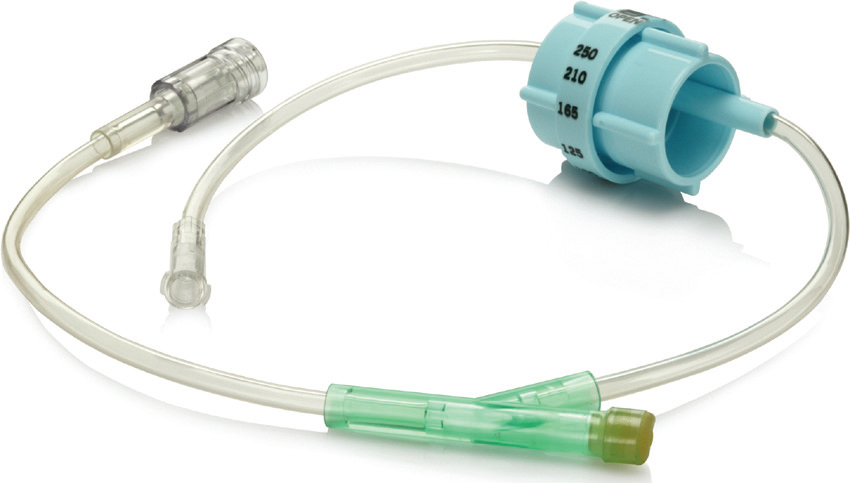
![]() Check calibrations on gravity flow rate devices. Dial-a-Flo provides a range from 5 to 250 mL per hr.
Check calibrations on gravity flow rate devices. Dial-a-Flo provides a range from 5 to 250 mL per hr.

